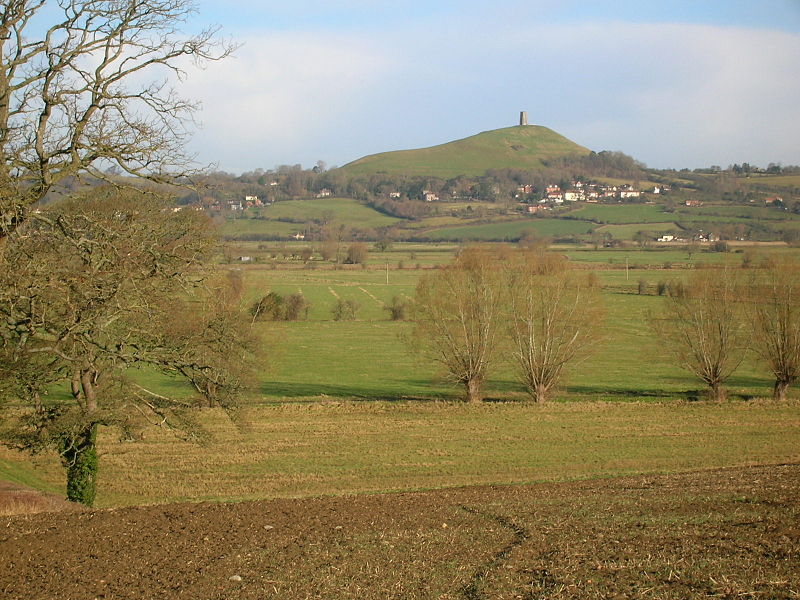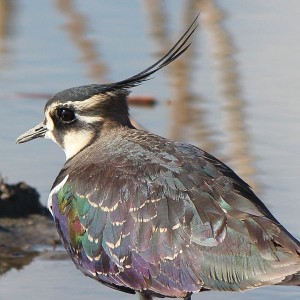
A ‘Vision’ of what the Somerset Levels and Moors might look like in 2030, intended to guide water and land management policies over the years ahead, has been agreed by a Task Force set up last year to address the area’s problems.

The Task Force includes representatives of farming, conservation, local authorities and Government agencies. It was set up at the suggestion of former Defra environment minister, Richard Benyon, in the wake of the floods of 2012/13, which coincided with the ending of many of the conservation agreements which have protected the area for the past 28 years.
Acting Chairman of the Task Force, Anthony Gibson, said that agreement on the Vision was a crucial first step in tackling the Levels’ problems.
“We now know where we want to go, and that ought to give a very clear sense of direction not only to the 20 year action plan for reducing the flood risk, on which we are just embarking, but all the other policies which impinge on this very special, but very threatened area.

“The really encouraging thing is the degree of consensus which the Vision represents. We all want the Levels’ landscape to remain the green grid-iron of withies, rhynes, meadows and droves that we know and love; we all want it to continue to be farmed productively, but in ways that enhance the nature conservation interest; we all want the water to be managed, so that the flood risk is reduced; we all want an even richer mix of wildlife than we’ve got already; and we all want a thriving local economy, built around the Levels’ special qualities.
“For the first time, all of the organisations and interests in the Levels and Moors are speaking with a single voice in saying “this is how we want the area to be”. The combination of the Vision and the 20 year action plan to deal with flooding does give us a priceless opportunity to get things right, for the Levels, its people, its farmers and its wildlife.”

Agreement on the Vision has been welcomed by both farming and conservation interests.
For the NFU, South West Regional Director, Mel Squires, said: “Farmers are at the heart of the Levels’ future, and will welcome this clear, positive statement of what we are all trying to achieve. True partnership with them must be the way forward, and we will continue to represent their interests with this collaborative action which will be necessary to turn the vision into reality.”
For the RSPB, South West Regional Director, Tony Richardson, said: “This new and exciting vision recognises the quality of the Somerset Levels’ natural environment and places it as central to a better future for people, the economy of the area and of course nature. The RSPB agrees wholeheartedly and calls on others to join in a big push for this better way forward.”
A Vision for the Somerset Levels and Moors in 2030
We see the Somerset Levels and Moors in 2030 as a thriving, nature-rich wetland landscape, with grassland farming taking place on the majority of the land. The impact of extreme weather events is being reduced by land and water management in both the upper catchments and the flood plain and by greater community resilience.
• The landscape remains one of open pasture land divided by a matrix of ditches and rhynes, often bordered by willow trees. Extensively managed wet grassland dominates the scene with the majority of the area in agriculture in 2010 still being farmed in 2030.
• The floodplains are managed to accommodate winter flooding whilst reducing flood risk elsewhere. These flood events are widely recognised as part of the special character of the Levels and Moors.
• The frequency and duration of severe flooding has been reduced, with a commensurate reduction in the flood risk to homes, businesses and major roads in the area.
• During the summer months there is an adequate supply and circulation of high quality irrigation water to meet the needs of the farmers and wildlife in the wetlands. On the low-lying peat moors, water levels have been adopted which conserve peat soils and avoid the loss of carbon to the atmosphere. Water quality has improved and meets all EU requirements.
• The Levels and Moors are regarded as one of the great natural spectacles in the UK and Europe with a mix of diverse and valuable habitats. Previously fragmented habitats such as fen and flower-rich meadows have been re-connected and are widely distributed. In the north of the area over 1,600 ha are managed as reed-bed, open water and bog. Elsewhere the populations of breeding waders exceed 800 pairs. Each winter the wetlands attract large numbers of wintering wildfowl and waders regularly exceeding 130,000 birds. Wetland species such as Crane, Bittern and pollinator populations flourish.
• Optimum use is being made of the agricultural potential of the Levels and Moors, particularly on the higher land, whilst unsustainable farming practices have been adapted or replaced to secure a robust, sustainable base to the local economy
• New businesses, including those based on ‘green tourism’, have developed, meeting the needs of local people and visitors alike, while brands based on the area’s special qualities are helping farmers to add value to the meat, milk and other goods and services that they produce.
• The internationally important archaeological and historic heritage of the area is protected from threats to its survival and is justly celebrated, providing a draw to visitors and a source of pride and identity to local communities.
• Farmers and landowners are rewarded financially for the public benefits and ecosystem services they provide by their land management including flood risk management, coastal management, carbon storage and the natural environment.
Somerset Levels and Moors Task Force January 31, 2014
[registration_form]
This would be lovely – what a vision, if it happened ….
Let’s hope that the current high profile of the area ensures that there is a commitment by government to fund this vision
It’s a bit motherhood and apple pie isn’t it?
A very anodyne PR exercise vitiated by the clearly inaccurate assertion at the third bullet point .
The “visionaries” have described the Levels and Moors as they are now (pre-Fludde). Why this is a vision needing “a big push for a better way forward” is beyond me – unless it is set against a fear that the reincarnated schemes won’t be tempting enough to prevent farmers returning to the (rather unsuccessful) arable experimentation started in the heydey of intervention.
All the interesting stuff is missing. In particular, how the wise visionaries envisage maintaining the water table at or just below soil level rather than 3 feet above it. The usual yada yada dumping all the blame on farmers on the Quatnocks, Blackdowns, Dorset Heights and Mid-Somerset Hills doesn’t wash. Neither does dumping blame on the lions working for the EA – the donkeys leading them are the ones needing the push.
For a flavour of the exceptional wildlife supported in the Levels and Moors until the very recent past – here’s a site that shows it: http://www.flickr.com/photos/jumpforjoy2010/sets/
filbert – I think you have misunderstood – the bullet points, I assume, are putting us into 2030 and so the third one can’t be ‘inaccurate’.
I would imagine that the value of an agreed vision – and this one is agreed (it seems) – is that it then provides a firmer basis for joint action to achieve it than if all parties start from different positions and are heading in different directions.
A little too cynical this time?
Oh I see, now you have explained it. Writing about something that has happened in the past in the present tense but set in the future. Hot Dog A’mighty that’s neat! I won’t fall for that trick again – I take it back.
The value of an agreed vision for 2030 is that it provides a firm basis for all parties to start from different positions and drive to meetings for the next 16 years and then head home again in different directions.
Too cynical? You can’t be too cynical. It has served me better than being credulous – and I’m 94. So I won’t be around to see the outcome of this miraculous vision. I’m glad I have already seen it, though but.
filbert – I think you have misunderstood – the bullet points, I assume, are putting us into 2030 and so the third one can’t be ‘inaccurate’.
I would imagine that the value of an agreed vision – and this one is agreed (it seems) – is that it then provides a firmer basis for joint action to achieve it than if all parties start from different positions and are heading in different directions.
A little too cynical this time?
This must be the obvious choice,those who push for the levels to be like a huge lake in the future fail to even think about the huge cost of buying 65 sq miles of the levels or the alternative of paying present owners to farm water as they suggest.
In case they have not noticed the Government is is grabbing all they can by selling things so the chance of them buying that land is zero in my opinion.
A couple of points;
Firstly, how pleasing to see the NFU and the RSPB seemingly sharing the same vision – how refreshing and long may it continue.
Secondly, there is a very capable Chairman at the helm, I can’t think of anyone better for this role than Anthony Gibson. He is is perhaps the best leader that the NFU never had and probably would make a decent Defra Minister.
On the subject of agricultural productivity, he recently wrote the following:
‘…it occurred to me that we really have no yardstick by which to measure progress or success. There is always farm income, of course, and I note that the consultants Andersons are predicting a modest increase. But whilst income matters hugely to farmers, it isn’t really a measure of what farming is achieving for the nation.
‘Productivity comes closer to fitting the bill, but even that doesn’t take account of the “sustainability” which is so widely – and justifiably – expected of UK Agriculture PLC.’
‘What we need is a measure which combines productivity with environmental impact – as measured by things like bird numbers, water quality or habitat creation: a “sustainable productivity index”, if you like, which would measure the industry’s progress in delivering what the nation needs and expects from it.’
I find the concept of a ‘sustainable productivity index’ a very appealing one. This would be a good topic for your blog to return to at some point Mark.
Ernest,probably one of the best comments ever.Those two points spot on and if only rspb and NFU would work together we would see far more progress and personally put the blame that they do not 50/50.As in all things if they are to move forward both sides have to want to and both sides alter the way they see each other.
Without doubt we have some very farmer friendly people in the rspb,others as I feel farmers see them at least do not come over as farmer friendly.
In my opinion if farmers could by better relations with rspb take interest in getting more farmland birds think it would have at least as big a impact as financial incentives.After all those large number of people feeding garden birds have no financial gain,in fact quite the reverse as some spend quite a bit of money each week for the pleasure of seeing them.
Anthony Gibson certainly served the South West farmers well for many years.
So Dennis, what about the Campaign for the Farmed Environment – an attempt to get farmers and conservationists working together to mitigate the loss of setaside and to some extent providing wider acknowledgement of the failure of modern agriculture to provide resources for farmland wildlife. Why hasn’t that been a roaring success?
John,I have explained many times if we talk about the vast majority of farmers they will not embrace farmland bird improvement until they feel the rspb is genuinely farmer friendly,that is of course a personal opinion but I see many farmers and they do not go in raptures about rspb I can assure you,also the proof of how farmers feel is in your own last 7 words.
Stress this a personal opinion but at least it would explain the situation and nothing else does.
Many blogs on rspb site if read by farmers come across,well lets be generous and say not pro farmer by a long way.